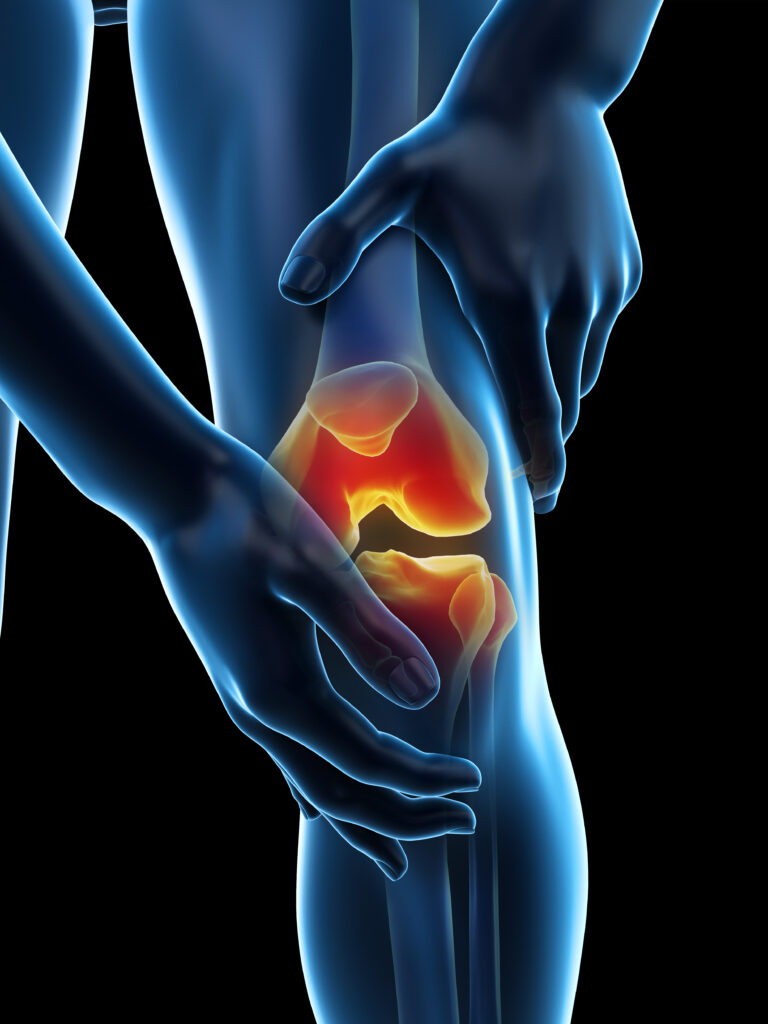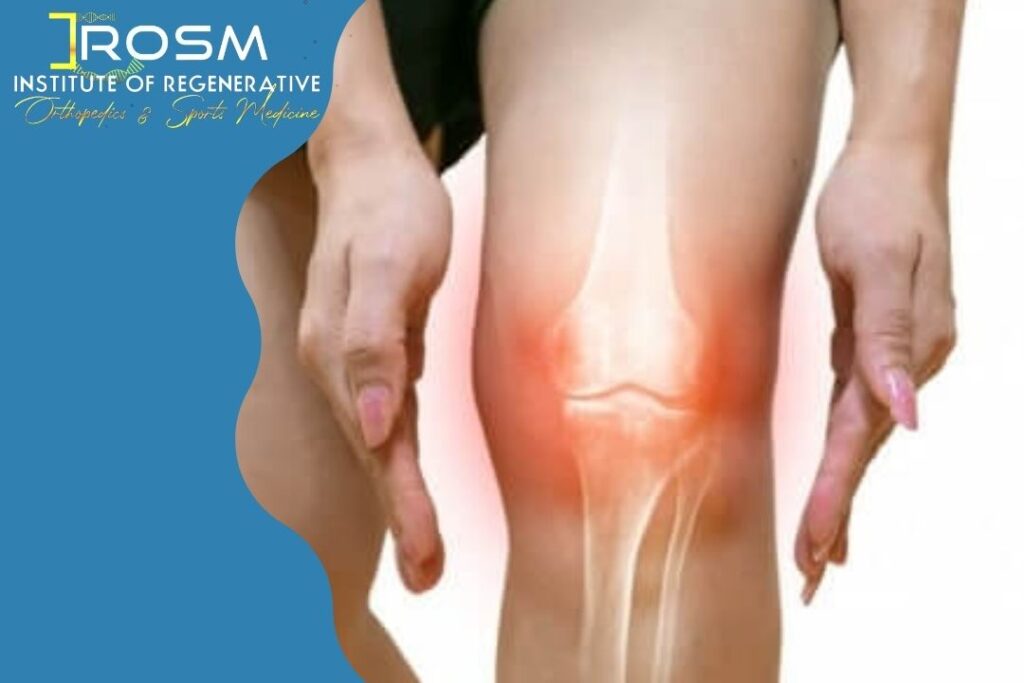- info@irosm.com
- 3333 West Commercial Blvd , Ste 101 Fort Lauderdale , Fl, 33309
(954) 751 6990
The patella, also called the kneecap is a small bone present on the front of your knee joint. The underside of the patella is covered by cartilage that allows smooth gliding of the knee with movement. Overuse or misalignment of the patella can cause wear and tear of the cartilage. Furthermore when this causes pain is referral to as chondromalacia.

Chondromalacia patella is a common condition characterized by softening, weakening and damage of the cartilage. The condition is most often seen among young athletes and older adults who have arthritis of the knee. It is especially seen in women.
There is no explicit reason why the cartilage damage occurs. However, it is associated with improper knee alignment or imbalance in the tightness of the muscles holding it in place. Overuse of the knee in certain sports activities may cause wear and tear of the cartilage. This may cause rubbing or grinding of the kneecap against the bone instead of it smoothly gliding over the knee joint.
Chondromalacia patella may also be caused due to injuries such as fractures or dislocations, or may develop as a part of your ageing process.
Chondromalacia patella is the most common cause of knee pain. Called patellofemoral pain, it is characterized by the following:
Other symptoms may include:
The most common symptom of chondromalacia is knee pain, which is often felt at the front of the knee or under the kneecap. The pain may worsen when walking up or down stairs, kneeling, or sitting for extended periods. Swelling and a grinding or popping sensation in the knee joint may also be present. If you’re experiencing these symptoms, it’s important to seek medical attention from the best sports medicine in Fort Lauderdale to receive a proper diagnosis and develop an appropriate treatment plan.


To diagnose chondromalacia, your doctor will perform a thorough physical examination and may order imaging tests such as an X-ray, MRI, Ultrasound or arthroscopy. Once diagnosed, the treatment approach will depend on the severity of the condition.
Your doctor will conduct a physical examination by applying pressure on different areas of your knee and moving your leg in different positions. You may be asked to undergo imaging tests including an X-ray, Ultrasound, CT scan and MRI scan to obtain detailed images of the bones and soft tissues of the knee.
Conservative treatment options for chondromalacia include rest, ice, physical therapy exercises to strengthen the muscles around the knee, and anti-inflammatory medications to reduce pain and swelling. In some cases, regenerative medicine techniques such as stem cell therapy or platelet-rich plasma (PRP) injections may be recommended to promote healing and regeneration of the damaged cartilage.
If conservative treatments fail to provide relief, or if the condition is more severe, surgical intervention may be necessary. Surgical procedures for chondromalacia can range from minimally invasive arthroscopic techniques to more extensive surgeries, such as realignment procedures or cartilage restoration techniques. Consultation with a specialist in regenerative orthopedics can help determine the most appropriate surgical approach for your specific case.
Prevention and Rehabilitation
To prevent chondromalacia and protect your knee joints, it’s important to engage in regular exercise and maintain a healthy weight. Strengthening the muscles around the knee, particularly the quadriceps, can help provide better support and stability. It’s also essential to wear proper footwear and use appropriate techniques when participating in physical activities.
If you’ve been diagnosed with chondromalacia or are recovering from treatment, a comprehensive rehabilitation program under the guidance of a physical therapist can be beneficial. This program may include exercises to improve flexibility, strengthen the surrounding muscles, and improve overall joint function.
In conclusion, chondromalacia is a common condition that affects the knee joint, causing pain and discomfort. Seeking prompt medical attention from the best sports medicine in Fort Lauderdale can help in accurate diagnosis and appropriate treatment. With a combination of conservative measures, regenerative medicine options, and surgical intervention when necessary, individuals with chondromalacia can find relief and regain their active lifestyles. Remember to consult with a medical professional for personalized advice and guidance on managing chondromalacia and protecting your knee health.

The treatments for chondromalacia patella initially involves simple conservative procedures. You may be asked to rest your knee and avoid any activity that may strain the knee joint. Your doctor may prescribe painkillers and anti-inflammatory drugs to relieve pain and reduce swelling. Physical therapy may help you to improve the muscle strength, decrease stress on your knee and aid in correcting the misalignment. Wearing support braces and taping around the knee may help you protect your joint, reduce pain and improve alignment. Application of ice on the knee may be recommended after exercise.
When non-surgical treatment does not relieve pain, your doctor may recommend surgical treatment. Surgery may involve:
Your doctor will examine your condition and provide you with best treatment option.

Description here.... Dr. Gonzalez and his staff were professional and extremely helpful. The doctor did a release of a very painful trigger finger. The procedure was carefully done right there in the office. I experienced no pain and by the next day the difference was remarkable. The pain was totally gone, the hand back to normal within a couple of days. Thank you Dr. Gonzalez. Susan Morrow.
I had a trigger finger procedure done by Dr. Gonzalez and I was gladly surprised by the attention of Dr Gonzalez and the personnel and, with all the wellness measures taken during my visits. I strongly recommend the trigger finger release procedure done by Dr Gonzalez, quick, painless and effective.
Had three prior trigger finger surgeries with other orthopedic physicians which required full anesthesia in outpatient hospitals, about 6 hours from admission to release, incisions with stitches, painful healing, could not use my hand for weeks, and still have scars. Then I developed another two trigger fingers, and heard about Dr. Gonzales method. The process is absolutely amazing, just about 30 minutes from start to finish, less invasive than a visit to the dentist, no incisions, no scars, and back to normal in a few days. Dr. Gonzales and his staff are extremely professional and friendly, would never have a trigger finger done in any other way.
I had an amazing experience with Dr. Gonzalez. He operated on my little finger using a needle release technique for a trigger finger. Absolutely no pain, even when he anesthetized my little finger. the Doctor is an excellent surgeon using a ultra-sound machine he was able to internally view the procedure. Withing a few days you could not see where he entered the the finger. The procedure was done within his office. No surgery center. Procedure took a total of about 30 minutes. He is compassionate and caring, taking what ever time is necessary to explain the procedure. A few months before I had basically the same procedure performed on my thumbs. A different surgeon used a surgical tool that is probably ten, yes ten times the diameter of the specialized needle the Dr. Gonzales uses. I am still sore and stiff from that surgery. If your considering trigger finger surgery my opinion is that the per-cutaneous needle is vastly superior to the open surgery where the Doc cuts into the palm of the hand and leaves stitches and has to be performed in a surgery center, and a much longer recovery time. Dr. Gonzalez is the gold standard for a orthopedic hand surgeon.
I traveled 3 ½ hours, from Daytona Beach to Pembroke Pines, Florida, to see if Dr. Jorge Gonzalez' (Sports Medicine) Ultrasound-guided 'Trigger Finger Release' procedure could work for me … NOT A WASTED TRIP! I had the 'initial visit' (education and x-rays) on a Friday, and the actual operation the next Tuesday. One, almost painless numbing injection, and zero pain for the A1 release. No more trigger finger. Much, much better than the 'standard of care' 1 inch incision, in a surgical operating room setting, with the necessary stitches and their follow-up for removal. Thank you, Dr Gonzalez!

Call : (954) 751 6990
info@irosm.com